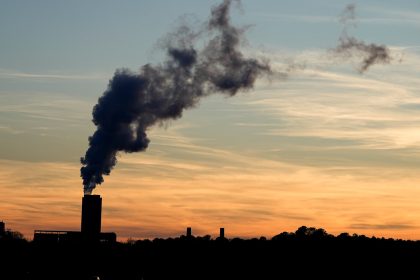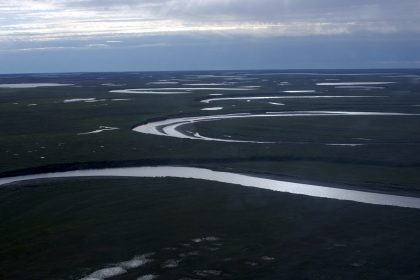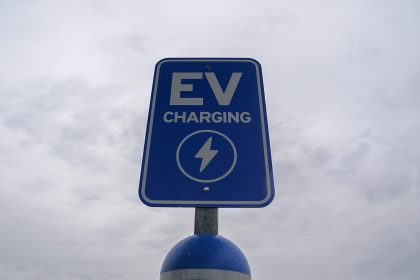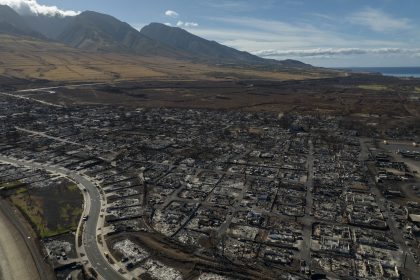Wildlife, Air Quality at Risk as Great Salt Lake Nears Low
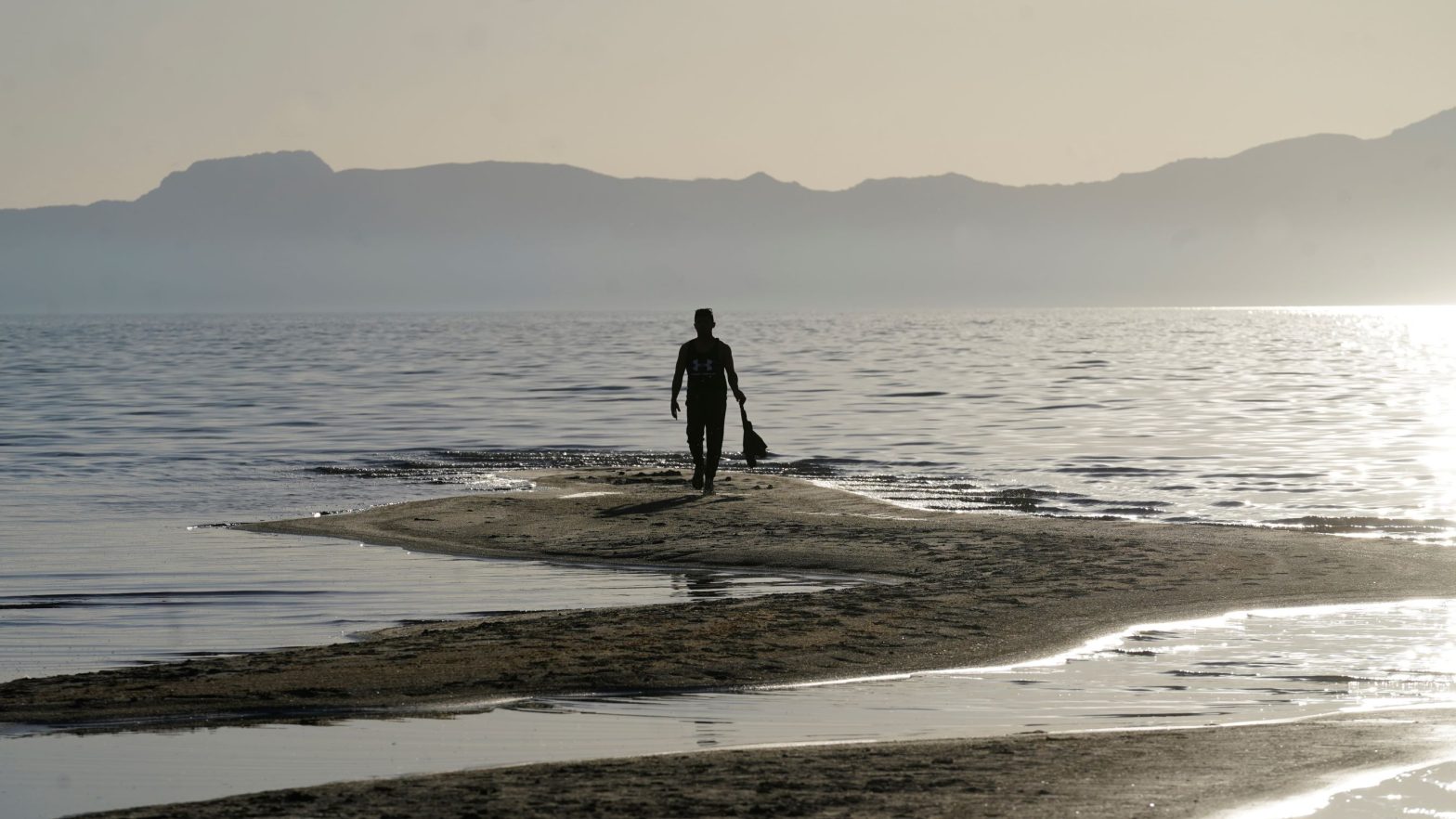
SALT LAKE CITY (AP) — The silvery blue waters of the Great Salt Lake sprawl across the Utah desert, having covered an area nearly the size of Delaware for much of history. For years, though, the largest natural lake west of the Mississippi River has been shrinking. And a drought gripping the American West could make this year the worst yet.
The receding water is already affecting the nesting spot of pelicans that are among the millions of birds dependent on the lake. Sailboats have been hoisted out of the water to keep them from getting stuck in the mud. More dry lakebed getting exposed could send arsenic-laced dust into the air that millions breathe.
“A lot us have been talking about the lake as flatlining,” said Lynn de Freitas, executive director of Friends of the Great Salt Lake.
The lake’s levels are expected to hit a 170-year low this year. It comes as the drought has the U.S. West bracing for a brutal wildfire season and coping with already low reservoirs. Utah Gov. Spencer Cox, a Republican, has begged people to cut back on lawn watering and “pray for rain.”
For the Great Salt Lake, though, it is only the latest challenge. People for years have been diverting water from rivers that flow into the lake to water crops and supply homes. Because the lake is shallow — about 35 feet (11 meters) at its deepest point — less water quickly translates to receding shorelines.
The water that remains stretches across a chunk of northern Utah, with highways on one end and remote land on the other. A resort — long since closed — once drew sunbathers who would float like corks in the extra salty waters. Picnic tables once a quick stroll from the shore are now a 10-minute walk away.
Robert Atkinson, 91, remembers that resort and the feeling of weightlessness in the water. When he returned this year to fly over the lake in a motorized paraglider, he found it changed.
“It’s much shallower than I would have expected it to be,” he said.
The waves have been replaced by dry, gravelly lakebed that’s grown to 750 square miles (1,942 square kilometers). Winds can whip up dust from the dry lakebed that is laced with naturally occurring arsenic, said Kevin Perry, a University of Utah atmospheric scientist.
It blows through a region that already has some of the dirtiest wintertime air in the country because of seasonal geographic conditions that trap pollution between the mountains.
Perry warns of what happened at California’s Owens Lake, which was pumped dry to feed thirsty Los Angeles and created a dust bowl that cost millions of dollars to tamp down. The Great Salt Lake is much larger and closer to a populated area, Perry said.
Luckily, much of the bed of Utah’s giant lake has a crust that makes it tougher for dust to blow. Perry is researching how long the protective crust will last and how dangerous the soil’s arsenic might be to people.
This year is primed to be especially bleak. Utah is one of the driest states in the country, and most of its water comes from snowfall. The snowpack was below normal last winter and the soil was dry, meaning much of the melted snow that flowed down the mountains soaked into the ground.
Most years, the Great Salt Lake gains up to 2 feet (half a meter) from spring runoff. This year, it was just 6 inches (15 centimeters), Perry said.
“We’ve never had an April lake level that was as low as it was this year,” he said.
More exposed lakebed also means more people have ventured onto the crust, including off-road vehicles that damage it, Great Salt Lake coordinator Laura Vernon said.
“The more continued drought we have, the more of the salt crust will be weathered and more dust will become airborne because there’s less of that protective crust layer,” she said.
The swirling dust also could speed the melting of Utah’s snow, according to research by McKenzie Skiles, a snow hydrologist at the University of Utah. Her study showed that dust from one storm made the snow so much darker that it melted a week earlier than expected. While much of that dust came from other sources, an expansion of dry lakebed raises concerns about changes to the state’s billon-dollar ski industry.
“No one wants to ski dirty snow,” she said.
While the lake’s vast waters are too salty for most creatures except brine shrimp, for sailors like Marilyn Ross, 65, it’s a tranquil paradise with panoramas of distant peaks.
“You get out on this lake and it’s better than going to a psychiatrist, it’s really very calming,” she said.
But this year, the little red boat named Promiscuous that she and her husband have sailed for more than 20 years was hoisted out of the water with a massive crane just as the season got underway. Record-low lake levels were expected to leave the boats stuck in the mud rather than skimming the waves. Low water has kept the other main marina closed for years.
“Some people don’t think that we’re ever going to be able to get back in,” Ross said.
Brine shrimp support a $57 million fish food industry in Utah but in the coming years, less water could make the salinity too great for even those tiny creatures to survive.
“We’re really coming to a critical time for the Great Salt Lake,” said Jaimi Butler, coordinator for Great Salt Lake Institute at Westminster College in Salt Lake City. She studies the American white pelican, one of the largest birds in North America.
They flock to Gunnison Island, a remote outpost in the lake where up to 20% of the bird’s population nests, with male and female birds cooperating to have one watch the eggs at all times.
“Mom goes fishing and dad stays at the nest,” Butler said.
But the falling lake levels have exposed a land bridge to the island, allowing foxes and coyotes to come across and hunt for rodents and other food. The activity frightens the shy birds accustomed to a quiet place to raise their young, so they flee the nests, leaving the eggs and baby birds to be eaten by gulls.
Pelicans aren’t the only birds dependent on the lake. It’s a stopover for many species to feed on their journey south.
A study from Utah State University says that to maintain lake levels, diverting water from rivers that flow into it would have to decrease by 30%. But for the state with the nation’s fastest-growing population, addressing the problem will require a major shift in how water is allocated and perceptions of the lake, which has a strong odor in some places caused treated wastewater and is home to billions of brine flies.
“There’s a lot of people who believe that every drop that goes into the Great Salt Lake is wasted,” Perry said. “That’s the perspective I’m trying to change. The lake has needs, too. And they’re not being met.”


















